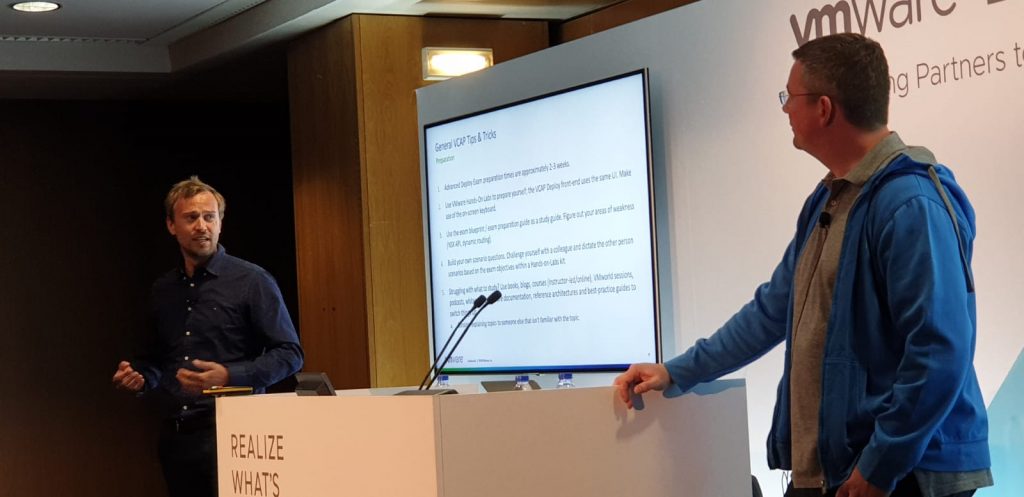VMworld is dead – long live VMware Explore. We are back and it is getting physical again. Barcelona & San Francisco welcomes us back to celebrate VMware’s yearly conference.

Why you should go to VMware Explore? Let me give you 10 reasons:
- Meeting/Connecting/Drinking/Eating or in business-talk: Connecting with people who love the datacenter field is such a great selling point of yourself. If you are passionate about something and you give something to others (blogs, tweets, vBeers or a simple thank you) there will come the day that you will get something back from them. Use VMware Explore to find new friends.
- The Solutions Exchange is a great chance to get in-touch with the overall ecosystem in our software-defined datacenter & multi-cloud world. Seek for a discussion with the people at the booth. I know, sometimes they cannot give you the level of information you want to have, therefore try to figure out which product might interest you and schedule an appointment with a specific person to discuss your needs and ideas.
- Many of the breakout-sessions are really really good. Remember: many Gin Tonic’s are good as well, but if you get too many …. you might know what I mean. Select your breakout session wisely. Remember that with a VMware Explore ticket you can access all breakout sessions later on (even though most of the session will get public-accessible after a longer-term). Check out William Lam’s fantastic collection of all direct-links to last years VMworld sessions. But hey: don’t think now you have everything you need. I am pretty sure there is a lot of great/new stuff is coming this year.
- Check the VMTN booth, vBrownbag & blogger table. Many of the people in our field would love to share their knowledge during this conference.. Unfortunately their session is not getting accepted for political, technical or whatever reasons :) -> Apply for a vBrownbag session & check the VMTN booth at the community space to listen and learn from other experts in the field . Send in your own proposal or just learn from the others in small community-agnostic way.
- Meet the experts: VMware Explore will have a very high density of Experts. Try to make appointments to talk about certain problems, wishes, design/product-questions you have.
- Connect with people in advance. Go on twitter, figure out what’s going on in San Francisco. Organize or join those public meetings & events. Figure out what the vendors/community-members are sponsoring in the evening. The VMware Explore party is NOT the only event in the evening. Make sure that you register early for those late-night events. Do not miss the chance to talk to the presenter after the session or try to use twitter to figure out where us geeks meet after-hours.
- If you feel lonely…. join the Hackathon [I am sure there will be one :)]. I have joined the hackathon a few years agon in Las Vegas and we had a great time. You get together with very very smart people and try to solve specific problems. Even though small the amount of time (and minor technical challenges) are not allowing to create a new hypervisor, people loved this event.
- Meet the community and VMware’s social media persons behind the scene. My favorite place every year is community booth with the tables where all the blogger and community active persons are. Take your time to talk with me/us. Take your time to talk to the persons who manage the social media branch within VMware. Big thanks to everyone involved: Corey Romero, Tom Berry, Tej Cheema, Jenni Gonzales, Julia Klaus, Eric Nielsen and all the others that are part of this fantastic team.
- Come back in your daily job with new ideas. I discovered that multiple times. Many of us know a lot of things, but over the years or during specific problem-solving tasks you end up in a very specific situation based on initial assumptions. Assumptions that might have been changed by newer technologies, methodologies, smart peoples words, etc. Getting together with thousands of other smart people will definitely give you a better chance to open the box of your mind.
- Find business and job opportunities: Not a solid argument to convince your boss, but the opportunities within the SDDC and cloud era are big. New opportunities will come up outside and inside your company. To be able to recognize the opportunities you need to have a feeling for the market and environment. I realized during last VMworlds that this is the perfect location to develop such a feeling.
What’s next? Convinvce your boss & Register here.













